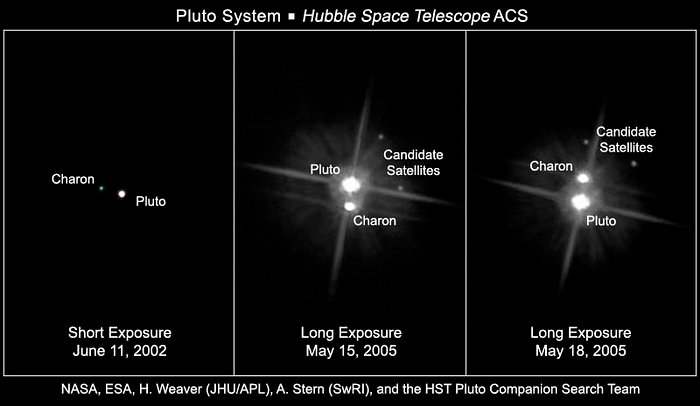Hubble views the Pluto system
These Hubble Space Telescope images, taken by the Advanced Camera for Surveys, reveal Pluto, its large moon Charon, and the planet's two new putative satellites. In the short-exposure image [left], taken June 11, 2002, the candidate moons cannot be seen. They do, however, appear in the middle and right-hand images. Longer exposure times were used to take these images. Pluto and Charon are overexposed in these images, causing the bright streaks or "blooms" that emerge vertically from them. The candidate moons are not overexposed because they are thousands of times less bright than Pluto and Charon. In these unprocessed images, various optical artifacts of the Advanced Camera for Surveys system are visible, such as the radial spokes of light caused by the telescope's optics. The enhanced-color images of Pluto and Charon were constructed by combining images taken in filters near 475 nanometers (blue) and 555 nanometers (green-yellow). The images of the new satellites were taken in a single filter centered near 606 nanometers (yellow), so no colour information is available for them.
Credit:About the Image
About the Object
| Name: | Charon, Hydra, Nix, Pluto |
| Type: | Solar System : Planet : Satellite Solar System : Interplanetary Body : Dwarf planet |
| Category: | Solar System |
Colours & filters
| Band | Wavelength | Telescope |
|---|---|---|
| Optical B | 475 nm |
Hubble Space Telescope
ACS |
| Optical V | 555 nm |
Hubble Space Telescope
ACS |
| Optical V | 606 nm |
Hubble Space Telescope
ACS |
